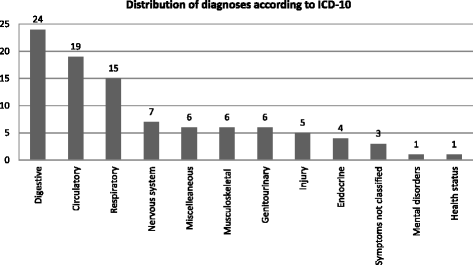Under-triage in telephone consultation is related to non-normative symptom description and interpersonal communication: a mixed methods study
- PMID: 28506282
- PMCID: PMC5433057
- DOI: 10.1186/s13049-017-0390-0
Under-triage in telephone consultation is related to non-normative symptom description and interpersonal communication: a mixed methods study
Abstract
Background: Telephone consultation and triage are used to limit the workload on emergency departments. Lack of visual cues and clinical tests put telephone consultations to a disadvantage compared to face-to-face consultations increasing the risk of under-triage. Under-triage occurs in telephone triage; however why under-triage happens is not explored yet. The aim of the study was to describe situations of under-triage in context, to assess the quality of under-triaged calls, and to identify communication patterns contributing to under-triage in a regional OOH service in the capital region of Denmark.
Methods: Explanatory simultaneous mixed method with thematic analysis and descriptive statistics was chosen. The study was carried out in an Out-Of-Hours service (OOH) in the Capital Region of Denmark, Copenhagen. Under-triage was defined as Potentially Under-Triaged Calls (PUTC) by specific criteria to an OOH Hotline, and identification by integration of three databases: Medical Hotline database, Emergency number database, including the Ambulance database, and electronic patient records. Distribution of PUTC were carried out using ICD-10 codes to identify diagnosis and main themes identified by qualitative analysis of audio recorded under-triaged calls. Study period was October 15th to November 30th 2014.
Results: Three hundred twenty seven PUTC were identified, representing 0.04% of all calls (n = 937.056) to the OOH. Distribution of PUTC according to diagnoses was: digestive (24%), circulatory (19%), respiratory (15%) and all others (42%). Thematic analysis of the voice logs suggested that inadequate communication and non-normative symptom description contributed to under-triage.
Discussion: The incidence of potentially under-triage is low (0.04%). However, the over-representation of digestive, circulatory, and respiratory diagnoses might suggest that under-triage is related to inadequate symptom description. We recommend that caller and call-handler collaborate systematically on problem identification and negotiate non-normative symptom description.
Conclusion: The incidence of under-triage is low (0.04%). However, the over-representation of digestive, circulatory, and respiratory diagnoses might suggest that under-triage is related to inadequate symptom description. We recommend that caller and call-handler collaborate systematically on problem identification and negotiate non-normative symptom description.
Keywords: ICD codes; Out-of-hours medical care; Prehospital acute medicine; Telephone consultation; Telephone hotline; Triage (under-triage).
Figures



References
MeSH terms
LinkOut - more resources
Full Text Sources
Other Literature Sources
Miscellaneous

